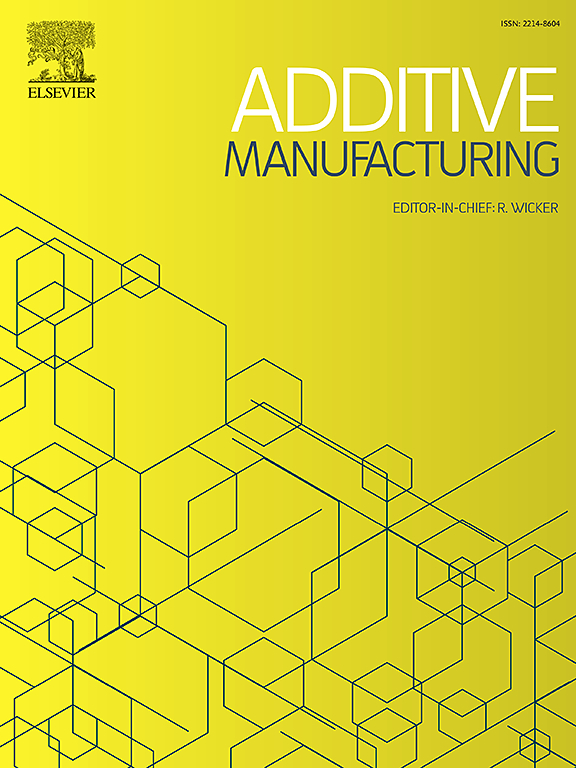Printability criterion and filler characteristics model for material extrusion additive manufacturing
IF 10.3
1区 工程技术
Q1 ENGINEERING, MANUFACTURING
引用次数: 0
Abstract
Material extrusion is an additive manufacturing technique that enables the creation of reproducible and complex hardware by depositing a viscous, shear-thinning ink onto a substrate in a custom-pattern via extrusion through a syringe. The ability of an ink to be extruded onto a substrate in many layers and maintain the desired shape is what defines printability. Printability has historically been investigated in an iterative manner by formulating and printing inks and then performing postmortem analysis of final parts. Highly concentrated pastes continue to pose issues for practitioners as the effect of filler morphology and size dispersity on the ink rheology and corresponding printability is not well understood. A printability criterion based on the particle filler’s maximum packing fraction was recently proposed to provide a general framework to understand printability of particle-filled inks. Inks were found to be printable if the particle loading was within 90–94 % of the maximum packing fraction of the particle. Here we expand on that work to validate the generality of the maximum packing fraction criterion by testing with 10 new single and multimodal particle fillers. The maximum packing fraction calculated from small amplitude oscillatory shear experiments and is found to correctly predict the printability range for all inks. We then utilize statistical methods to develop a filler characteristics model to predict the maximum packing fraction from particle analysis alone. These two methods paired together can significantly speed up development of new inks, increase the performance of material extrusion printing, and improve the stability of printed parts, with less wasted time and materials.
求助全文
约1分钟内获得全文
求助全文
来源期刊

Additive manufacturing
Materials Science-General Materials Science
CiteScore
19.80
自引率
12.70%
发文量
648
审稿时长
35 days
期刊介绍:
Additive Manufacturing stands as a peer-reviewed journal dedicated to delivering high-quality research papers and reviews in the field of additive manufacturing, serving both academia and industry leaders. The journal's objective is to recognize the innovative essence of additive manufacturing and its diverse applications, providing a comprehensive overview of current developments and future prospects.
The transformative potential of additive manufacturing technologies in product design and manufacturing is poised to disrupt traditional approaches. In response to this paradigm shift, a distinctive and comprehensive publication outlet was essential. Additive Manufacturing fulfills this need, offering a platform for engineers, materials scientists, and practitioners across academia and various industries to document and share innovations in these evolving technologies.
 求助内容:
求助内容: 应助结果提醒方式:
应助结果提醒方式:


